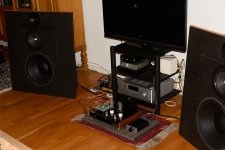Scott - I'm thinking several concurrent conversations / queries on that subject just might pique the interest of "management" to the possible market demand for such a little gadget.
SE class A amp with 5 or 10 watts max it's perfect for not gadget drivers 😉
Make sense in small room or moderate volume needs if less sensible , efficient speakers.
Find good match to Your audio pleasure

Attachments
-
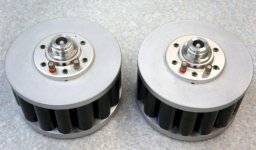 3FAFE43D-DCC1-4BC2-85A6-E2530AC65A2C.jpg143.4 KB · Views: 592
3FAFE43D-DCC1-4BC2-85A6-E2530AC65A2C.jpg143.4 KB · Views: 592 -
 E0BEAB1F-C147-40C3-86B3-5942EDD2A9C8.jpg178.1 KB · Views: 586
E0BEAB1F-C147-40C3-86B3-5942EDD2A9C8.jpg178.1 KB · Views: 586 -
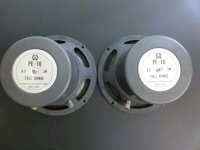 31FC1921-57CB-476C-9A63-66D7795BC981.JPG805.7 KB · Views: 580
31FC1921-57CB-476C-9A63-66D7795BC981.JPG805.7 KB · Views: 580 -
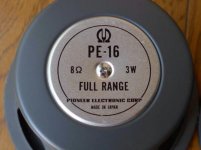 D2574293-D2C4-46CD-8302-47FABC9F6864.jpg153.3 KB · Views: 592
D2574293-D2C4-46CD-8302-47FABC9F6864.jpg153.3 KB · Views: 592 -
 3E98EA2B-B3A3-40D4-951A-C1F742B71FC1.JPG160.8 KB · Views: 530
3E98EA2B-B3A3-40D4-951A-C1F742B71FC1.JPG160.8 KB · Views: 530 -
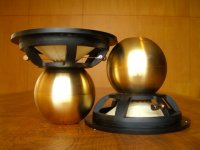 1F885C99-7EB5-4C4F-931A-3A2149A089E0.JPG81 KB · Views: 191
1F885C99-7EB5-4C4F-931A-3A2149A089E0.JPG81 KB · Views: 191 -
 6FAABBB1-73D2-46AD-BE14-3E0ED540A292.JPG36.1 KB · Views: 172
6FAABBB1-73D2-46AD-BE14-3E0ED540A292.JPG36.1 KB · Views: 172 -
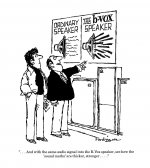 256C7025-2402-4BE2-B20F-DFC2D5860056.JPG628.1 KB · Views: 204
256C7025-2402-4BE2-B20F-DFC2D5860056.JPG628.1 KB · Views: 204
The single-ended output impedance is so large. Why do so many people like it?
So many people don’t understand output impedance. Larger is not a bad thing, just different, Don’t use a loudspeaker with an ugly impedance curve.
I will use mine to bi-amp th etop (>180 Hz) on these WAW.
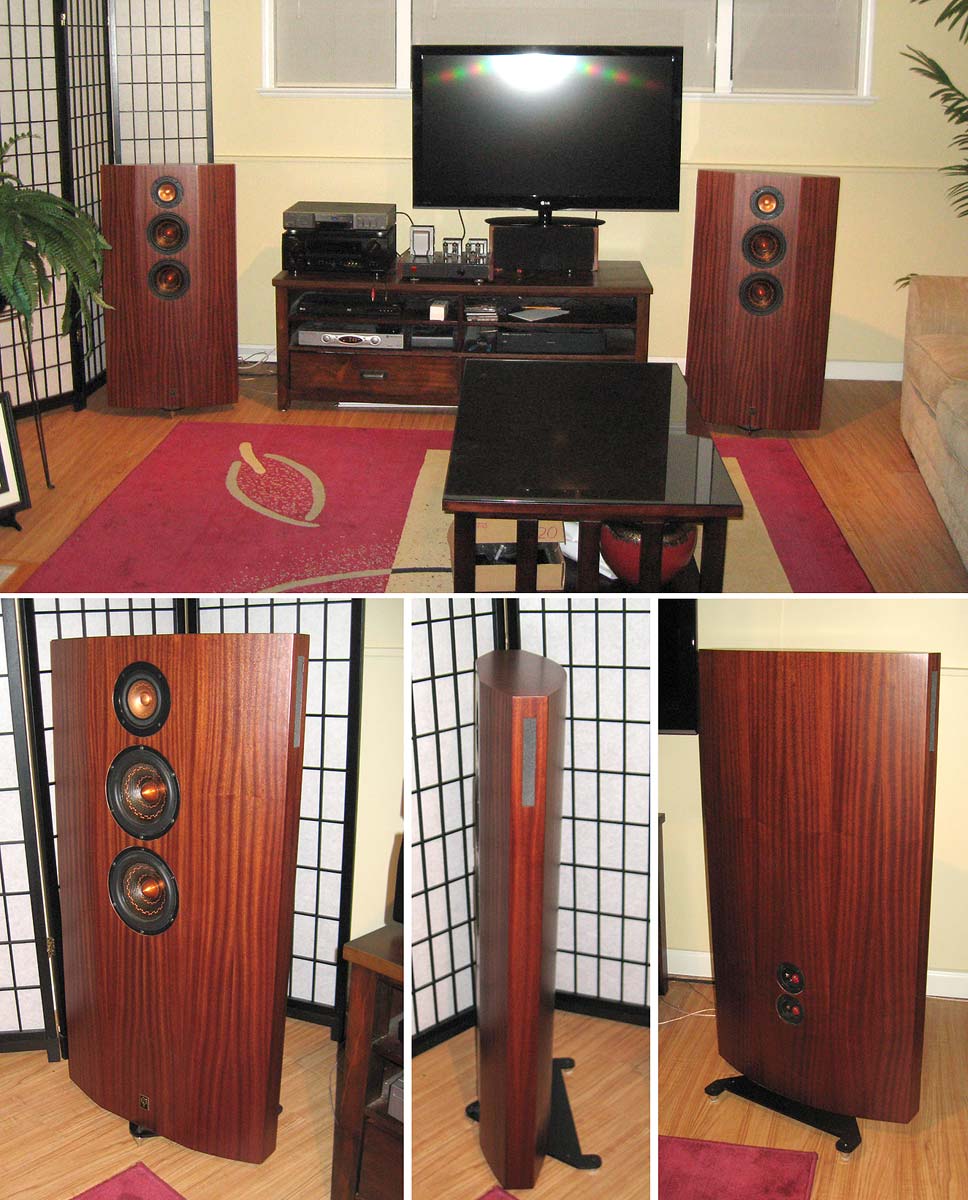
dave
The reason I will build the ACA is that I want to compare with my SE direct coupled 7-8 watt 300B amp which has been modified with better PSUs etc. to get low noise/hum.....< 0.1 mV at the speaker terminals with shorted input. I was surprised how good such an amp sounds compared to a big PP Solid State amp (in this case a NAD M3). By accident I clicked at PassLab forum and realized that SE SS amps exists. JFETs and MOSFETs are still called Solid State?
It was not my plan to switch from tubes......but now I will try it out to hear the difference. It will be nice to play with 24VDC instead of 540 VDC.
My OB speakers has ok sensitivity (93-94 dB) and impedance around 6 ohm and never drops lower than 4 Ohm. It works perfect using the 8 ohm output. I tried using bi-amp using the big Nad M3 for the bass but this was not good......integration much better using the 300B alone. It also feels like it is playing lower tones......why I don't know. I have not tried clipping sounds level yet. My ears goes bad before that.
My OB speakers are these which I spent a lot of hours building:
OBL-15
Picture attached of my setup. I can listen for hours.....before that I got tired after 1/2 - 1 hour of listening. Hope I will get similar experience with the ACA.......
It was not my plan to switch from tubes......but now I will try it out to hear the difference. It will be nice to play with 24VDC instead of 540 VDC.
My OB speakers has ok sensitivity (93-94 dB) and impedance around 6 ohm and never drops lower than 4 Ohm. It works perfect using the 8 ohm output. I tried using bi-amp using the big Nad M3 for the bass but this was not good......integration much better using the 300B alone. It also feels like it is playing lower tones......why I don't know. I have not tried clipping sounds level yet. My ears goes bad before that.
My OB speakers are these which I spent a lot of hours building:
OBL-15
Picture attached of my setup. I can listen for hours.....before that I got tired after 1/2 - 1 hour of listening. Hope I will get similar experience with the ACA.......
Attachments
make M2 and you're done with search for better amp
after that , every next one will be for joy of build , not necessity
ACA is too sissy for your speakers
after that , every next one will be for joy of build , not necessity
ACA is too sissy for your speakers
Is the ACA "more sissy" than a SE 300B amp?
I can try the M2 next time......but it is a push pull? ....and no PCB's at the DIY shop?
Maybe I will just build the G.I.P. Laboratory 9700A speakers:
GIP 9700 system
I read other place that they have 116 dB sensitivity......then the ACA is not sissy anymore? ......at least not in a 30 m2 room.......
Never understood why we don't see electromagnets in more speakers units.....then we only need 1W amps.......or 0.1W amp would probably do it.....
I can try the M2 next time......but it is a push pull? ....and no PCB's at the DIY shop?
Maybe I will just build the G.I.P. Laboratory 9700A speakers:
GIP 9700 system
I read other place that they have 116 dB sensitivity......then the ACA is not sissy anymore? ......at least not in a 30 m2 room.......
Never understood why we don't see electromagnets in more speakers units.....then we only need 1W amps.......or 0.1W amp would probably do it.....
you're obsessed with SE amps 
I don't care what parts are singing in my amps , same as for principle of operation - as long they're having THD spectra which suits me ......... and as long they're A Class amps
and - any talk about driving any 15" cone without 10W is just Sore Grapes talk ....
RCA LC1 is in that category , needing no more than 5W for helluva sound , but that's speaker almost acceptable to be used as microphone ....... maybe weakest (in power) iteration of Altec 416 is half close to that .....
anyway , if your speaker is not sissy one from Yore , or one directly transfered with Time Machine from same place , forget on anything with less than 10W , if you want anything close to realistic levels , while still having decent bass control

I don't care what parts are singing in my amps , same as for principle of operation - as long they're having THD spectra which suits me ......... and as long they're A Class amps
and - any talk about driving any 15" cone without 10W is just Sore Grapes talk ....
RCA LC1 is in that category , needing no more than 5W for helluva sound , but that's speaker almost acceptable to be used as microphone ....... maybe weakest (in power) iteration of Altec 416 is half close to that .....
anyway , if your speaker is not sissy one from Yore , or one directly transfered with Time Machine from same place , forget on anything with less than 10W , if you want anything close to realistic levels , while still having decent bass control
M2 coming to the store soon(ish). (With a fantastic new layout giving multiple driver options... 🙂 ) There will be a limited release before it's in the store.
Yes, it's push-pull.
Yes, it's push-pull.
I think the very small micro details.....in the mW area.....e.g. the fade out of a string on a acoustic guitar is delivered best by a SE.......but I have not played on a class A PP amp yet. My 300B has a very small amount of NFB. Think they do a very good job driving the 15" with neo-magnets. They are 1000W rated with 2000W in peak. But as OB they are used for another purpose. They are made for bi-amping.....so room for at lot of experiments. Putting the 180W M3 on can get everything to rattle.....but not that sound I am after......
Interesting......can always get a couple of boards......I have never seen a schematic like the M2......it took some time to realize that the transformer was coupled as an auto-transformer.....it looked strange the way it was coupled.....hopefully it has very little DC at the output......and is safe if something bad should happen.....so you don't get the rail voltage at the speakers......in that respect the ACA is safe 🙂M2 coming to the store soon(ish). (With a fantastic new layout giving multiple driver options... 🙂 ) There will be a limited release before it's in the store.
Yes, it's push-pull.
Does the output impedance affect damping? What are the parameters of single-ended sound quality?Low output impedance does not automatically mean good amplifier sound. There are many other parameters that make an amplifier sound wonderful.
Yes, you divide Zload with Zsource to find the DF. DF = Zload / Zsource (output impedance).
It depends on the speaker how high a DF it needs to be reasonable "controlled" (woofer).
In the old days it was a sales parameter (maybe still is) to have a very high damping factor (>50). If the watts just doubles when Zload is divided by 2.....all the way to 1 ohm it indicates an amp with high DF (e.g. 200w in 8 ohm, 400 in 4, 800 in 2 and 1600 in 1). Probably the old big Threshold amps could do that......but not the ACA.
Sound quality of SE.....they have no cross-over distortion....they has dominant 2nd order harmonics. They have very little distortion at low level. Distortion raises by power level (like an acoustic instrument does). They sound natural. The "s-sound" of voices is not dominant and sounds natural. Voices sounds fantastic.....string instruments also. That is the qualities my 300B SE tube amp has an I expect the ACA to be like like.....if you like to play Metal at 120 dB you probably need one of the old Threshold amps.....with 16 - 32 big power transistors in parallel pr. channel in a PP configuration (that is my guess these amps was built like that.....looking at the physical size). They where sold in the danish "HiFi-Klubben" around 1980 or so... 🙂 ...but as a student I could only afford a small NAD amp 🙂
It depends on the speaker how high a DF it needs to be reasonable "controlled" (woofer).
In the old days it was a sales parameter (maybe still is) to have a very high damping factor (>50). If the watts just doubles when Zload is divided by 2.....all the way to 1 ohm it indicates an amp with high DF (e.g. 200w in 8 ohm, 400 in 4, 800 in 2 and 1600 in 1). Probably the old big Threshold amps could do that......but not the ACA.
Sound quality of SE.....they have no cross-over distortion....they has dominant 2nd order harmonics. They have very little distortion at low level. Distortion raises by power level (like an acoustic instrument does). They sound natural. The "s-sound" of voices is not dominant and sounds natural. Voices sounds fantastic.....string instruments also. That is the qualities my 300B SE tube amp has an I expect the ACA to be like like.....if you like to play Metal at 120 dB you probably need one of the old Threshold amps.....with 16 - 32 big power transistors in parallel pr. channel in a PP configuration (that is my guess these amps was built like that.....looking at the physical size). They where sold in the danish "HiFi-Klubben" around 1980 or so... 🙂 ...but as a student I could only afford a small NAD amp 🙂
Sales parameters? Mr. PASS also used harmonic distortion in the sales parameters in his article. The crossover distortion of the push-pull circuit was solved early with high bias. And Mr. PASS's circuit with a patented active current source is actually a push. Pull the circuit, such as PASS AM.
M2 coming to the store soon(ish). (With a fantastic new layout giving multiple driver options... 🙂 ) There will be a limited release before it's in the store.
Yes, it's push-pull.
That's great news.

OK....maybe I should have used one of the big Krell mono blocks as example..... 🙂 ....I have nothing bad to say about threshold amps.....other than they were very expensive......Sales parameters? Mr. PASS also used harmonic distortion in the sales parameters in his article. The crossover distortion of the push-pull circuit was solved early with high bias. And Mr. PASS's circuit with a patented active current source is actually a push. Pull the circuit, such as PASS AM.
About cross-over.....it is by definition non-existing in SE configurations.....it is my subjective impression that this is the reason why SE configurations can deliver the micro details where the signal < 10 mV. They are also very linear there working on a very small part of the "curve". I don't think a PP configuration can compete here......but I have no backup of measurements.....it is a pure subjective impression after switching from PP to SE.
M2 coming to the store soon(ish). (With a fantastic new layout giving multiple driver options... 🙂 ) There will be a limited release before it's in the store.
Yes, it's push-pull.
About time. 🙂
For more omph in a SE I suggest BA-1 with BA-3 front end. I love mine and I also have a SE 300B. Both are excellent sounding without competing against each other.
Last edited:
M2 coming to the store soon(ish). (With a fantastic new layout giving multiple driver options... 🙂 ) There will be a limited release before it's in the store.
Yes, it's push-pull.
Hmmm interesting! This will delay me building a F6
The crossover distortion of the push-pull circuit was solved early with high bias.
Not really. The problem, usually, just pushed up in level, hopefully high enuff that it is not as painful. Transconductance doubleing.
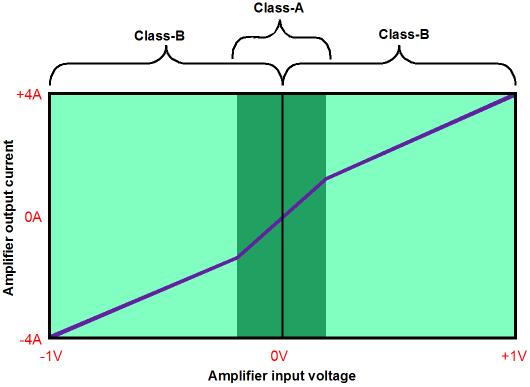
More here: Class-A? Class-AB? Amplifiers
And this a rambling discourse on development of a constant transconductance Class AB amp: Schiit Happened: The Story of the World's Most Improbable Start-Up | Page 2026 | Head-Fi.org
In today’s state of the market, most speaker manufacturers assume th eamp will have low output impedance (and thus give us speakers with ugly impedance curves) and amp manufacturers assume amps need low output impedance. Because of that we are pretty much missing out on a whole world of other options.
There are clear reasons why a high output impedance amplifiers (taken far enuff current amplifiers) can be advantageous. This is because typical voice coil driven devices are current devices. Drive them with a current source and all sorts of speaker/amplifier problems go away. But there is one big gotcha. The end FR of the speaker is convolved with the impedance of the speaker, so either the speaker needs to have a very flat impedance curve or one that mirrors the “natural” FR (ie impedance rises at the ends of the spectrum (when driven by a voltage amp)) naturally extending the response of the speaker — something very satisfying to hear with an appropriate single driver loudspeaker. The other place where, in our current world, is in a multiamped situation where the driver being driven has a flat impedance over the bandwidth it is being used.
A volatge amp — one with a low output impedance/high DF — requires a voltage to current conversion to drive a speaker, and the resistor in the I/V converter is the loudspeaker impedance, which can throw a wrench into the sound.
It is a very intersting experience to live with a variable transconductance amp — one with a knob that allows you to change output impedance from near zero to near infinity — and hear what it does.
dave
About cross-over.....it is by definition non-existing in SE configurations...
SE amps are by their very nature Class A amps.
More accurate to say "it is by definition non-existing in Class A configurations”
dave
I should point out that Class A push-pull follower Fets are different to the
extent that they have square law behavior - the transconductance variations
of each device are cancelled by the other, and the result is a constant output
impedance.
On of the reasons for my preference.
🙂
extent that they have square law behavior - the transconductance variations
of each device are cancelled by the other, and the result is a constant output
impedance.
On of the reasons for my preference.
🙂
- Status
- Not open for further replies.
- Home
- Amplifiers
- Pass Labs
- ACA V1.5 Illustrated Build Guide
